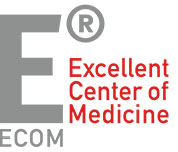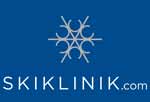| Tendon Inflammation |
|
Tendon inflammation, Tendon(partial) tear (Tendinitis, Peroneal Tendon luxation/ Peroneal Tendon insufficiency/ Peroneal Tendon partial rupture)
|
| Inflammations and tears of the tendons of the ankle joint are often a result of long-standing overload. Twist and compression trauma often worsen the situation so that it can come to long-lasting irritation and swelling situations. Acute injuries can lead to tears of the tendons, which heal with insufficient relief to form scars. The thickening caused by the scars leads to poorer lubricating properties between the tendon and tendon sheath, so that effusions in the tendon sheaths occur. The palpation in connection with the history often gives current evidence of the underlying injury. The extent and the necessary treatment can be determined with the aid of an MRI scan.
|
Therapy
|
| The therapy approach depends on the duration of the disease, the pain and the type of tendon damage. As long as no tear of the tendon exists, a non-operative approach can be chosen. By undertaking physiotherapeutic methods and taking anti-inflammatory medication, it is frequently possible to improve the symptoms. If however, structural damage to the tendon already exists since a few months, a full restoration of the initial situation is no longer possible. In this case a non-operative therapy is no longer promising and a careful removal of the scar tissue, as well as a stabilisation of the tendon should take place. This usually occurs with an open intervention.
|
Aftercare
|
Depending on the extent of the damage, a smoothening of the tendon while cutting-out the scar, or a full reconstruction is necessary. Accompanying instability in the friction bearing of the tendon frequently encourages damage and therefore must also be repaired in the same intervention (e.g. tightening of the ligament, retinaculoplastic).
For all cases involving an intervention on the tendons, the ankle joint must be initially immobilised for two weeks in a lower leg cast. Depending on how pronounced the intra-operatively found damage of the tendon is, the rest phase will be prolonged for up to six weeks.
After completion of the immobilisation phase, medical machine training will be undertaken in order to stabilise the joint and to strengthen the musculature.
|
Ability to work
|
| As long as the relief of the site of operation is ensured with under-arm crutches, the recommencement of light office work can occur after one to two weeks. Full weight-bearing is normally possible after six weeks.
|
Ability to do sport
|
| Running and jumping sport types should be avoided for three months after the surgery so that competition training can be recommenced at the earliest after 12 weeks.
|
|
|
SPECIALISED ORTHOPAEDIC SURGERY, ARTHROSCOPY, SPORT TRAUMATOLOGY, AND REHABILITATION
Arabellastr. 17
81925 Munich
Germany
Tel: +49. 89. 92 333 94-0
Fax : +49. 89. 92 333 94-29
Diese E-Mail-Adresse ist gegen Spam-Bots geschützt, Sie müssen Javascript aktivieren, damit Sie sie sehen können.
Dr. Erich H. Rembeck
Impressions of the ER Centre for Sport Orthopaedics in Arabellapark.
>> Photo Gallery
|










